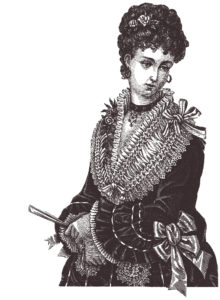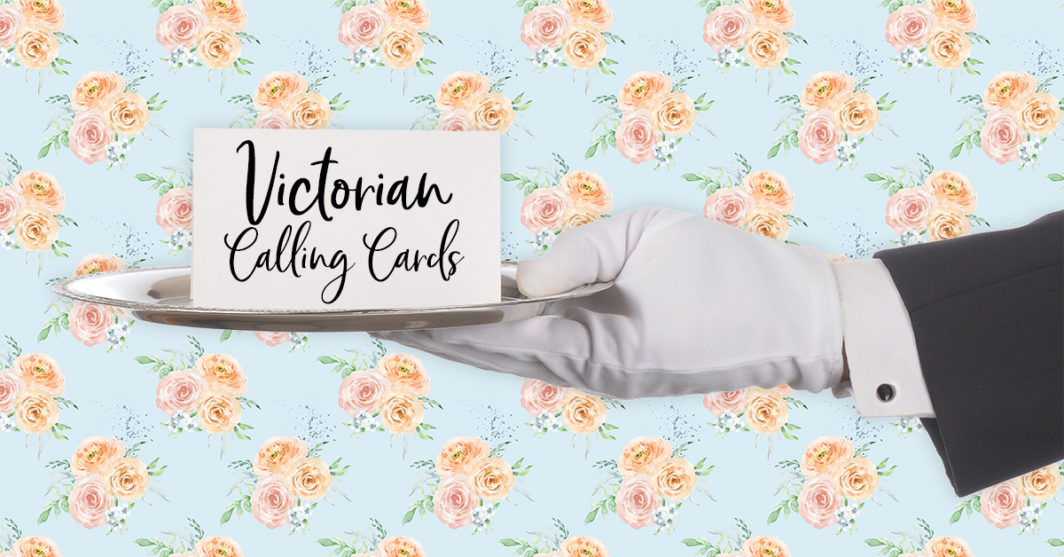Social interaction was a very formal affair for Victorian England. Calling Cards played an important role in the social etiquette of the time. There were strict etiquette rules, not just around how you socialised but also how you used calling cards too!
The idea of using calling cards wasn’t just reserved for the upper-class Victorians. Early examples go back as far as 15th Century China, but it is believed that the Victorian use of a calling or visitor card was adopted from the French une carte d’adresse, commonly used by the aristocracy of Europe and America.
Calling cards traditionally had the callers name on them, along with their title. If they desired, they would also show either their house name or the district in which they lived. A ladies calling card was square and large, whilst the men’s cards were smaller, more rectangular, so they could fit inside a breast pocket.
Why a calling card?
The entire premise of the calling card (otherwise known as a visitor card), relied on the house having servants – so was reserved for the middle and upper classes. The idea was the servant could take the card on behalf of their master or mistress, who could then decide if he/she wanted to see the person named on the card, at a later date. The servant would place all calling cards in a calling tray, kept in the entrance hall. Often, if someone of wealth had visited, their calling card would be kept in the tray for other visitors to see.
The etiquette around a calling card
There was a strict etiquette around the use of calling cards. You couldn’t just turn up to visit someone, you had to arrange it – and this is what the calling card was for. Either the mistress of the house or her servant would deliver the card to the home of the person she wished to visit, expressing her intent. The mistress of that house could then take her time to decide if she wished to allow the visit. If she did, she’d sent a card in return. If however, she wished to decline, she would either send her own calling card back in an envelope or not return one at all.
When to use a calling card
Calling cards were to be used for a number of occasions.
 They could express your appreciation for a lovely dinner party, send your condolences, let your friends know you were leaving town for an extended trip, invite them to your latest party, indicate your offer of courtship or to simply say hello. This was particularly useful if you were a new lady in town – you would immediately make calls to the other local middle and upper class homes, to hand in your calling card. If you were lucky, the mistress of the house would immediately invite you in or instruct the servant to hand over one of her cards. However if no card was forthcoming, she was rejecting your friendship.
They could express your appreciation for a lovely dinner party, send your condolences, let your friends know you were leaving town for an extended trip, invite them to your latest party, indicate your offer of courtship or to simply say hello. This was particularly useful if you were a new lady in town – you would immediately make calls to the other local middle and upper class homes, to hand in your calling card. If you were lucky, the mistress of the house would immediately invite you in or instruct the servant to hand over one of her cards. However if no card was forthcoming, she was rejecting your friendship.
The spirit of the calling card remains today
With the advent of lithography and chromolithography techniques, colourful printed cards became more ornate and decorative. Often, Victorian calling cards would have brightly coloured pictures and ornately written poems on them. These early calling cards gradually fell out of favour, with the advent of more informal social etiquette rules. However, the spirit of the calling card still remains, in the guise of the more commonly used business card of today.


